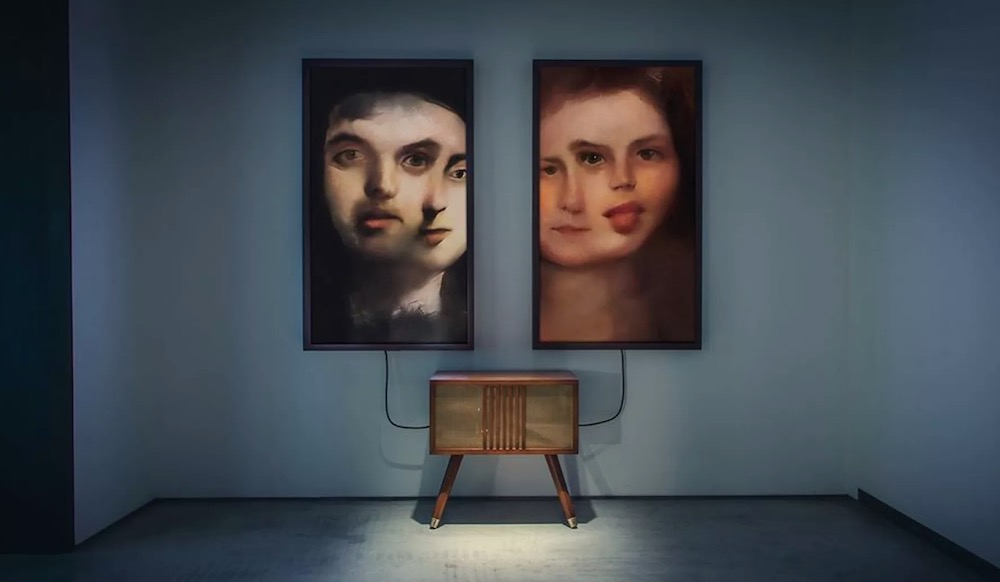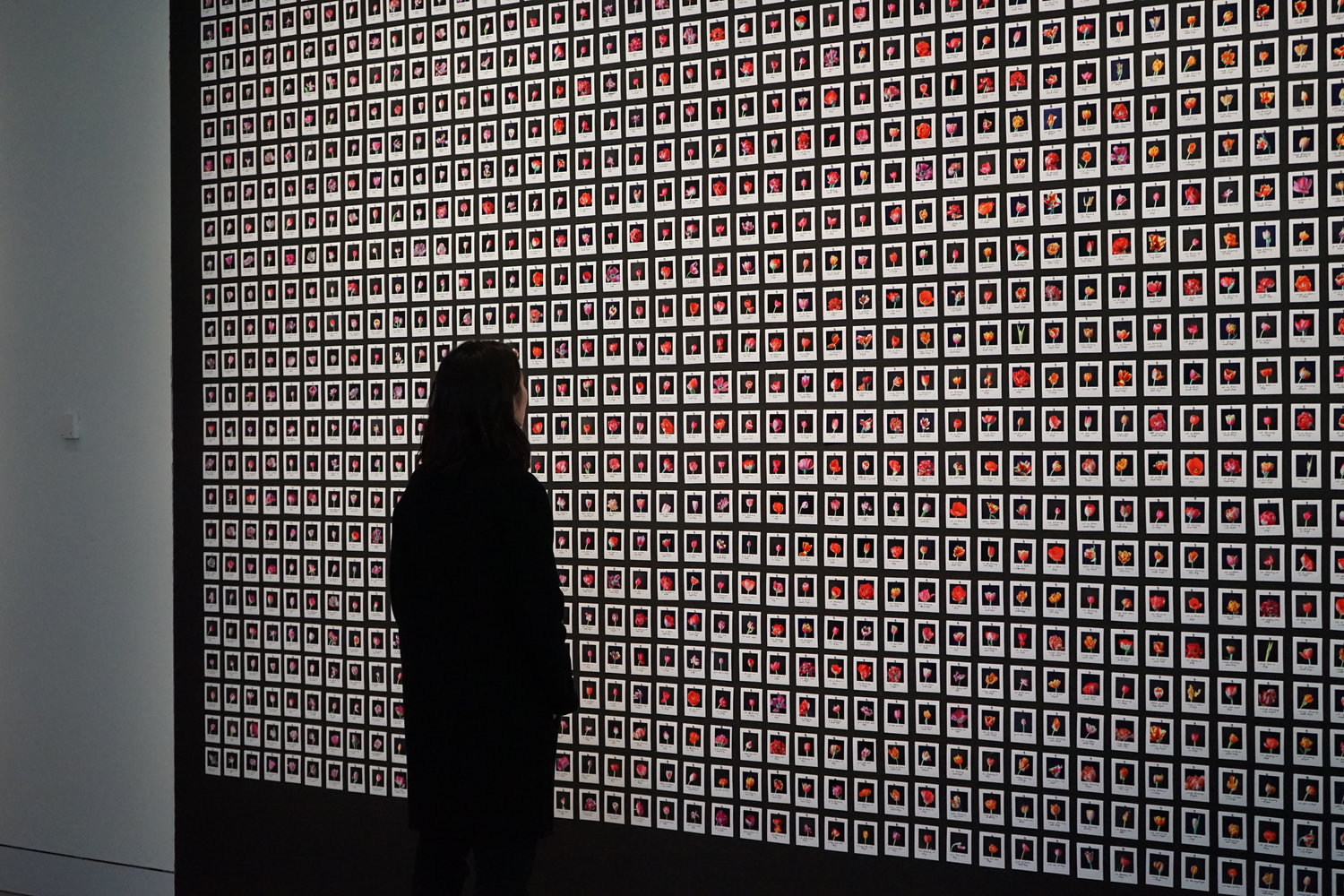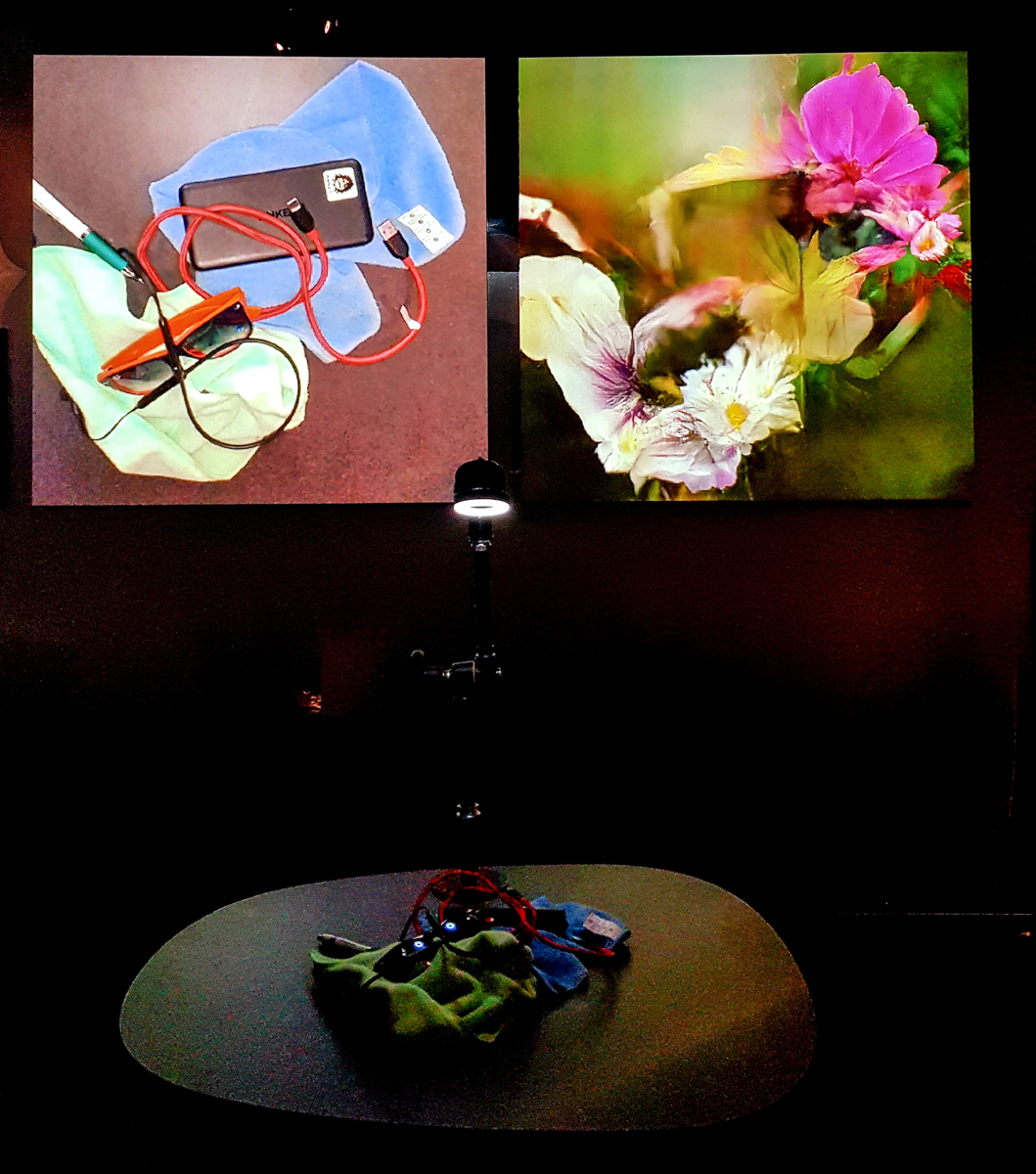|
|
|
Welcome to my webpage, here are few details about me, my projects in academia and photography. Currently, I am a Postdoc at NASA Jet Propulsion Lab, supervised by David R. Thompson. Prior to this, I was a DPhil student at University of Oxford, supervised by Niki Trigoni and Andrew Markham. In 2019-20, I was working as a research assistant and lecturer at the University of the Arts London in the Creative Computing Institute. Before that I was on a research internship at ETH Zurich in the EcoVision group (2019) and at Carnegie Mellon University in Franz Franchetti’s group (2017-18). I did my MSc and BSc at the Czech Technical University in Prague. I have been also working with Frontier Development Lab, as a researcher in FDL Europe 2021 and as a Machine Learning team lead in FDL USA 2022. In the summer of 2023, I also did an internship at the ESA Φ-lab. I like Machine Learning research, Arts, literature, traveling and analog photography.
Email /
Google Scholar /
GitHub /
YouTube /
|
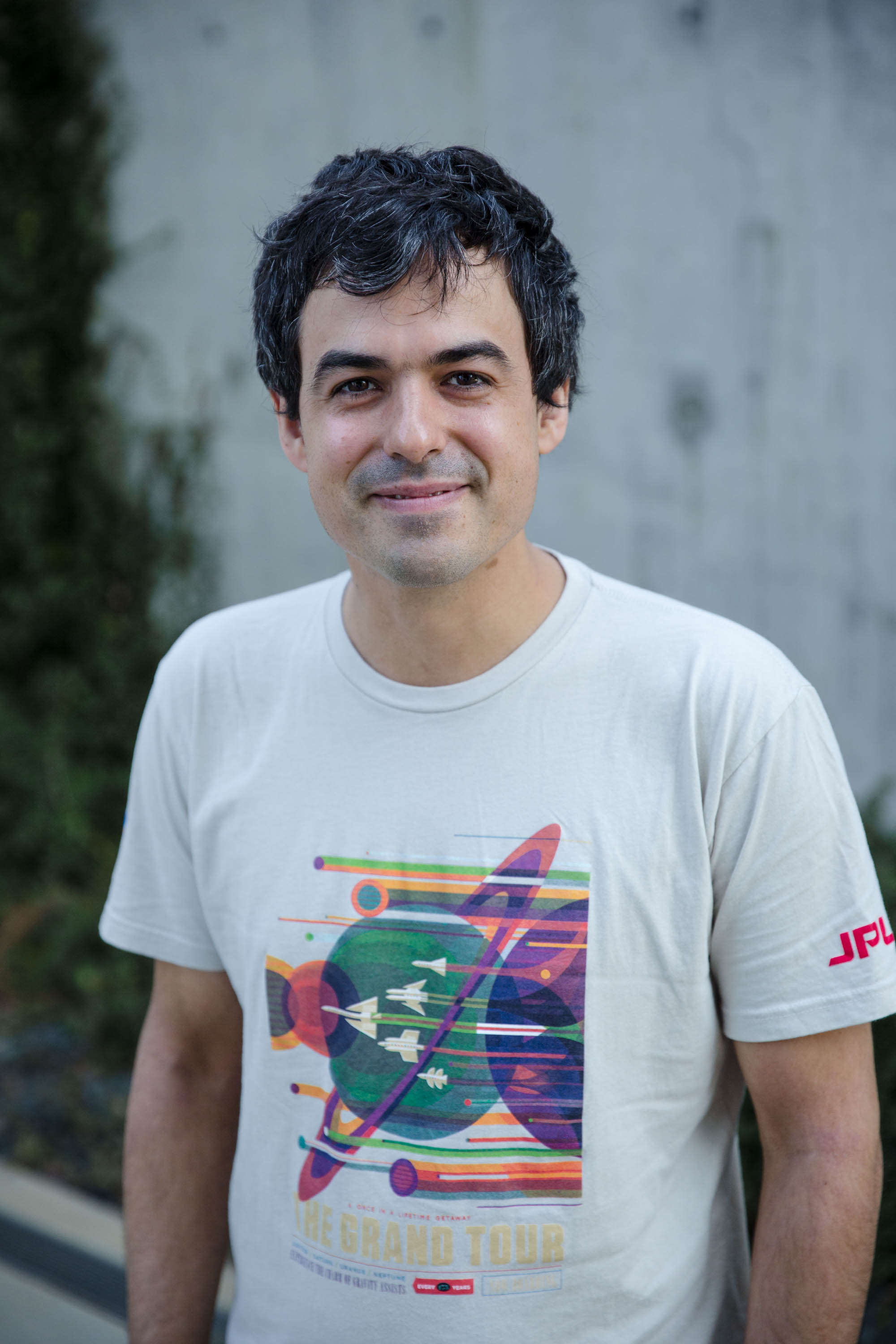
|
|
Featured research
My research interests are in Machine Learning applied in image analysis and generation, Computer Vision and Generative Models, often in the area of Remote Sensing. For the full list of my publications please check my Google Scholar profile, few selected works are listed here. |
|
Vít Růžička, Gonzalo Mateo-Garcia, Luis Gómez-Chova, Anna Vaughan, Luis Guanter, Andrew Markham Nature Scientific Reports, 2023; ECMWF–ESA workshop, 2022 Highlighted in the Top 100 papers of 2023 in Nature Scientific Reports. code and data / ECMWF–ESA workshop: presentation / video / media We introduce a new dataset of hyperspectral images from the AVIRIS-NG sensor with refined methane labels. We propose lightweight machine learning models for semantic segmentation of methane plumes, which outperform the classical baselines. We show zero-shot generalisation in the new EMIT hyperspectral sensor. Work conducted with Trillium Tech: STARCOP. |
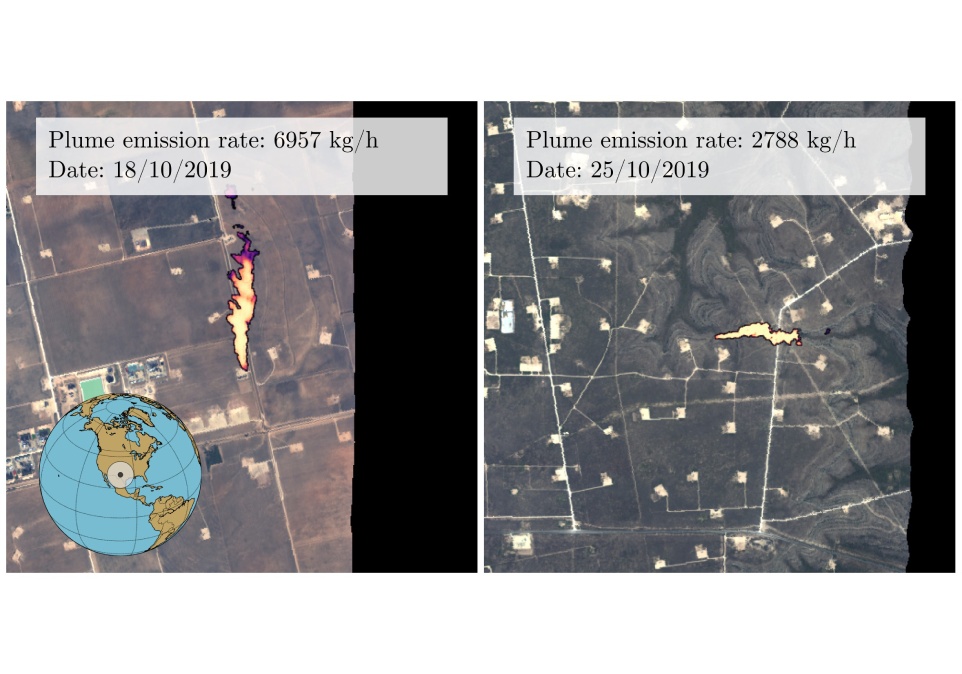 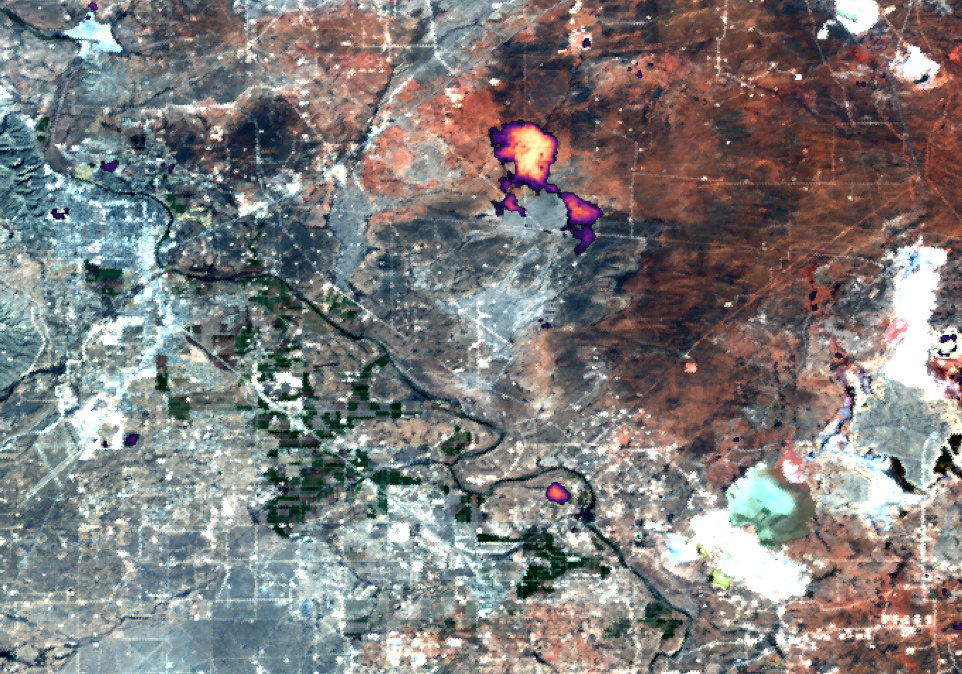
|
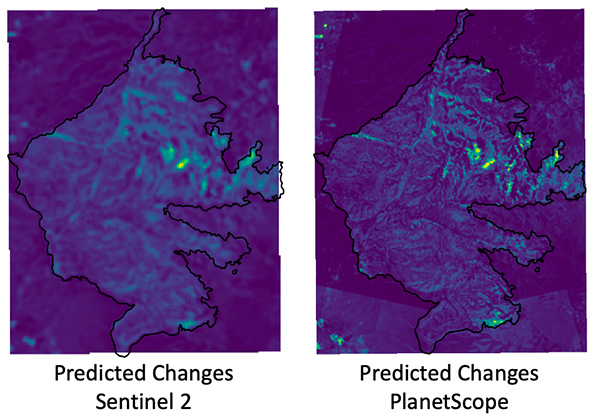 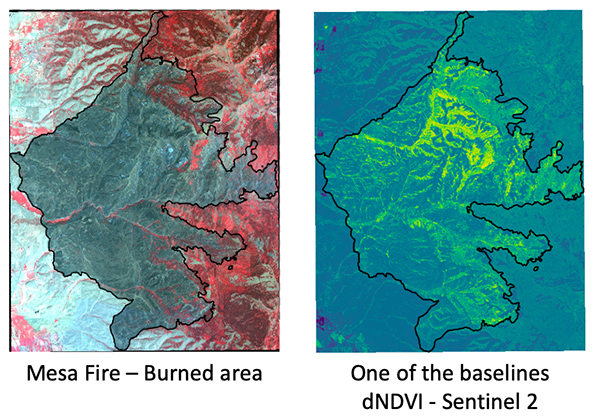
|
Beichen Zhang, Huiqi Wang, Amani Alabri, Karol Bot, Cole McCall, Dale Hamilton, Vít Růžička NeurIPS Workshop on AI for Humanitarian Assistance and Disaster Response Workshop (AI+HADR), 2022 code We show how to apply the contrastive learning technique of SimCLR for the task of unsupervised change detection, exemplified on wildfire detection. For this project, I was the ML team lead at the FDL US 2022. |
|
Vít Růžička, Anna Vaughan, Daniele De Martini, James Fulton, Valentina Salvatelli, Chris Bridges, Gonzalo Mateo-Garcia, Valentina Zantedeschi Nature Scientific Reports, 2022; NeurIPS Workshop on AI for Humanitarian Assistance and Disaster Response Workshop (AI+HADR), 2021 code & data / presentation slidesPresentation at AI+HADR'21:  /
video from AI+HADR'21
/
media 1, 2
/
video from AI+HADR'21
/
media 1, 2
We introduce the RaVÆn system, a lightweight, unsupervised approach for change detection in satellite data based on Variational Auto-Encoders (VAEs) with the specific purpose of on-board deployment. It flags changed areas to prioritise for downlink, shortening the response time. We show that the proposed method outperforms pixel-wise baselines and we test it on resource-limited hardware. We also release the annotated dataset of extreme events. Work conducted at the FDL 2021. In 2023 our model was tested on-board the D-Orbit's ION satellite which we report in the paper published at IGARSS 2023 - in addition, we showcase training of Machine Learning models on-board of the satellites (read more about it here). |
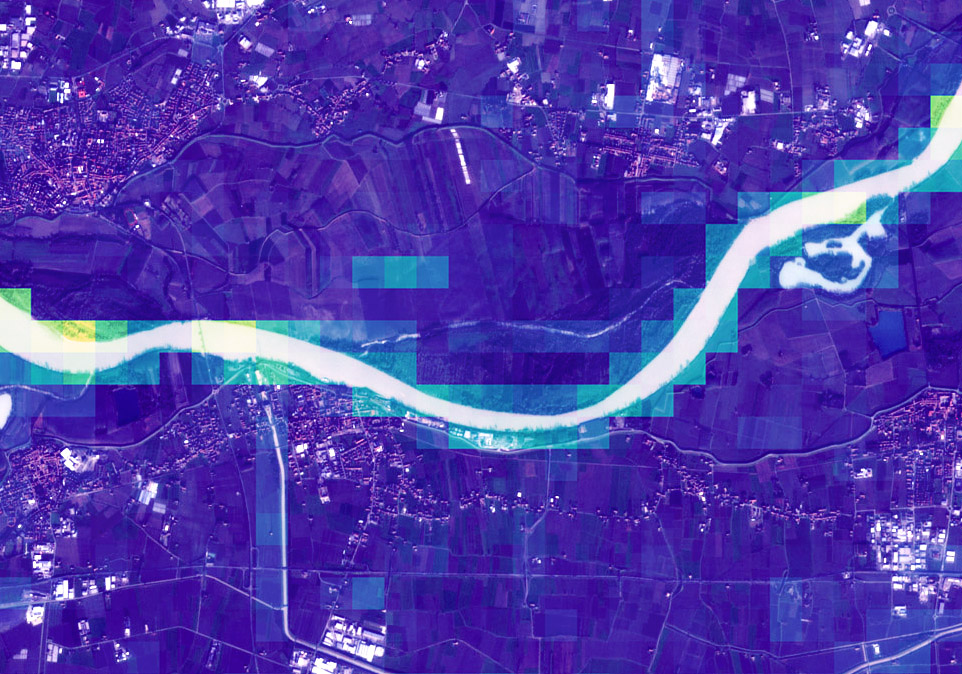 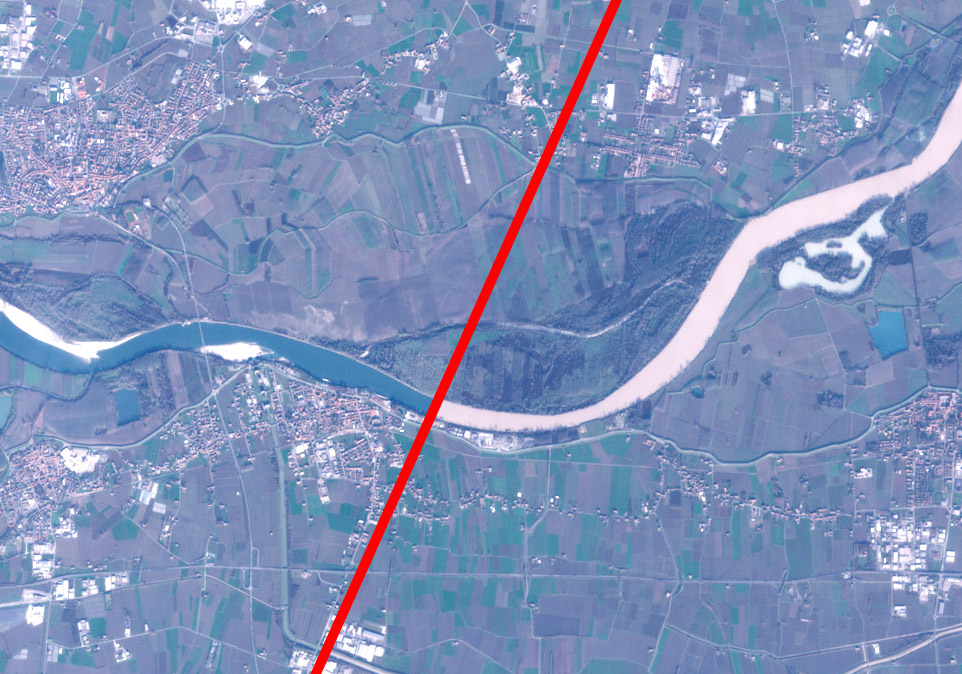
|
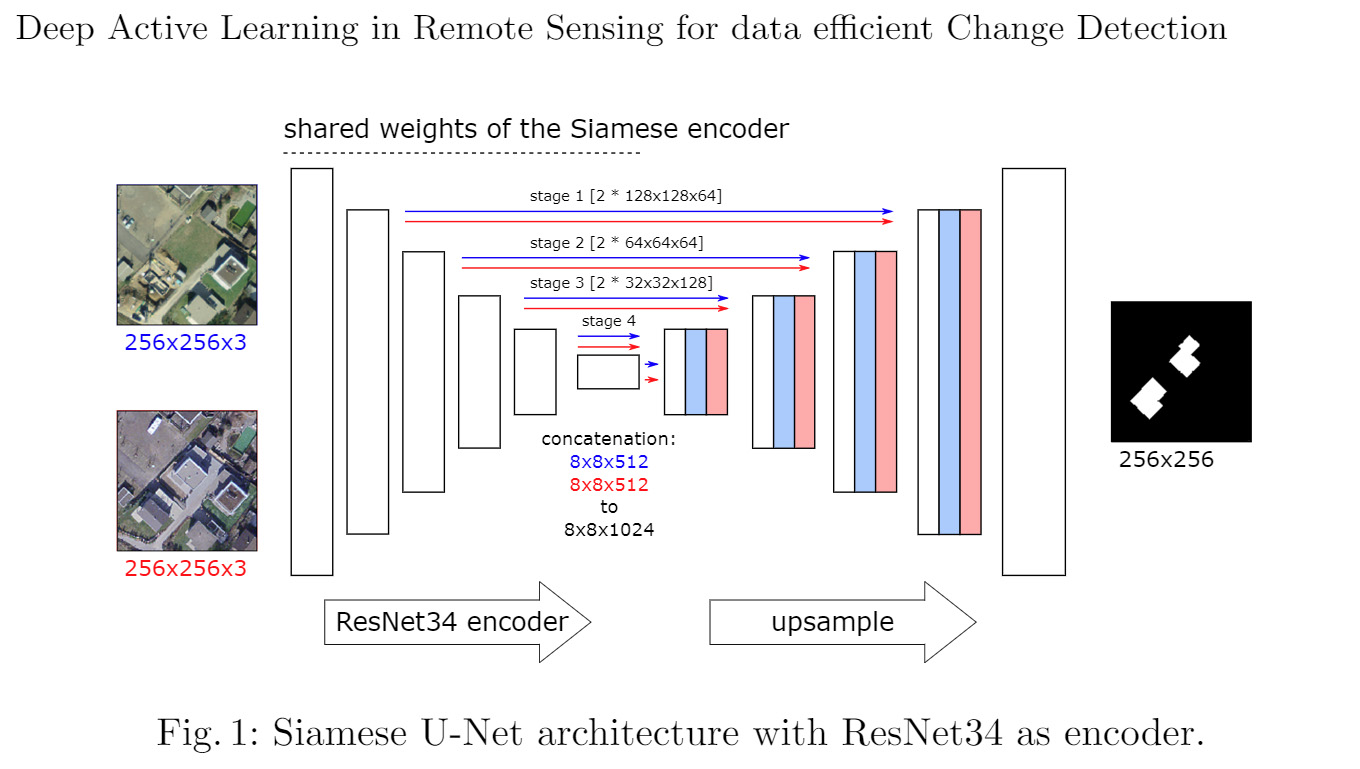 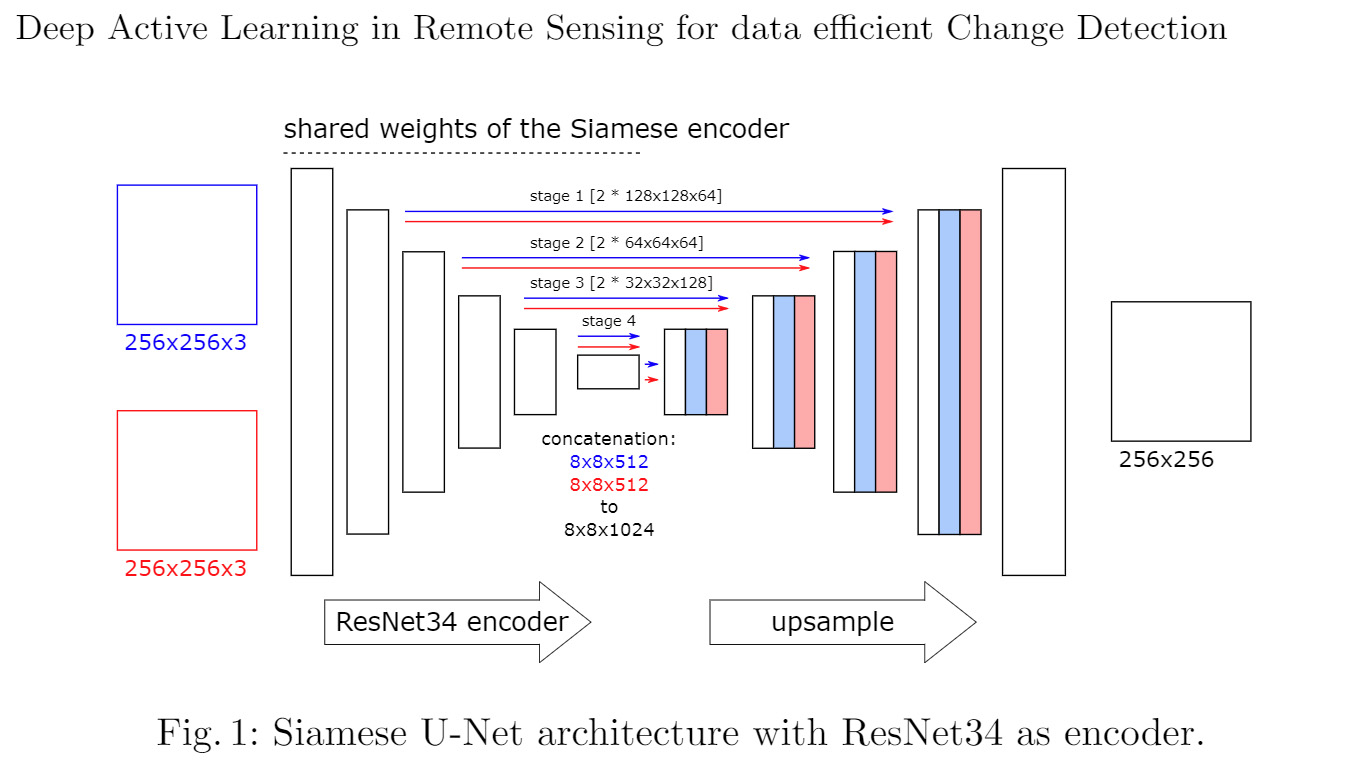
|
Vít Růžička, Stefano D'Aronco, Jan Dirk Wegner, Konrad Schindler ECML/PKDD 2020 workshop - Machine Learning for Earth Observation, 2020, Best Paper Award code / colab demoExample of inference: 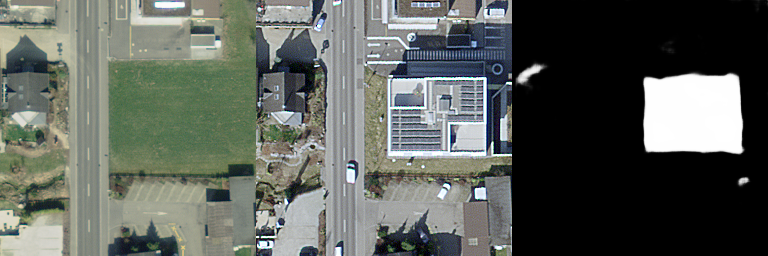 Figure shows aerial images from years 2012 (left), 2015 (middle) and the predicted change label (right). / presentation slidesPresentation at MACLEAN'20:  /
video from MACLEAN'20
/
video from MACLEAN'20
We investigate active learning in the context of deep neural networks for change detection and map updating. For this task we propose a Siamese version of the U-Net model and test two approaches in model uncertainty prediction (model ensembles and Monte Carlo Batch Normalization). Iteratively selecting the most uncertain samples for annotation, we reach the same performance as a model supervised with a large fully annotated training set with approx. 99% fewer annotated samples. |
|
Vít Růžička, Franz Franchetti IEEE High Performance Extreme Computing Conference, 2018, Best Paper Finalist video / code / media 1, 2 / presentation at HPEC'18Presentation at HPEC'18: 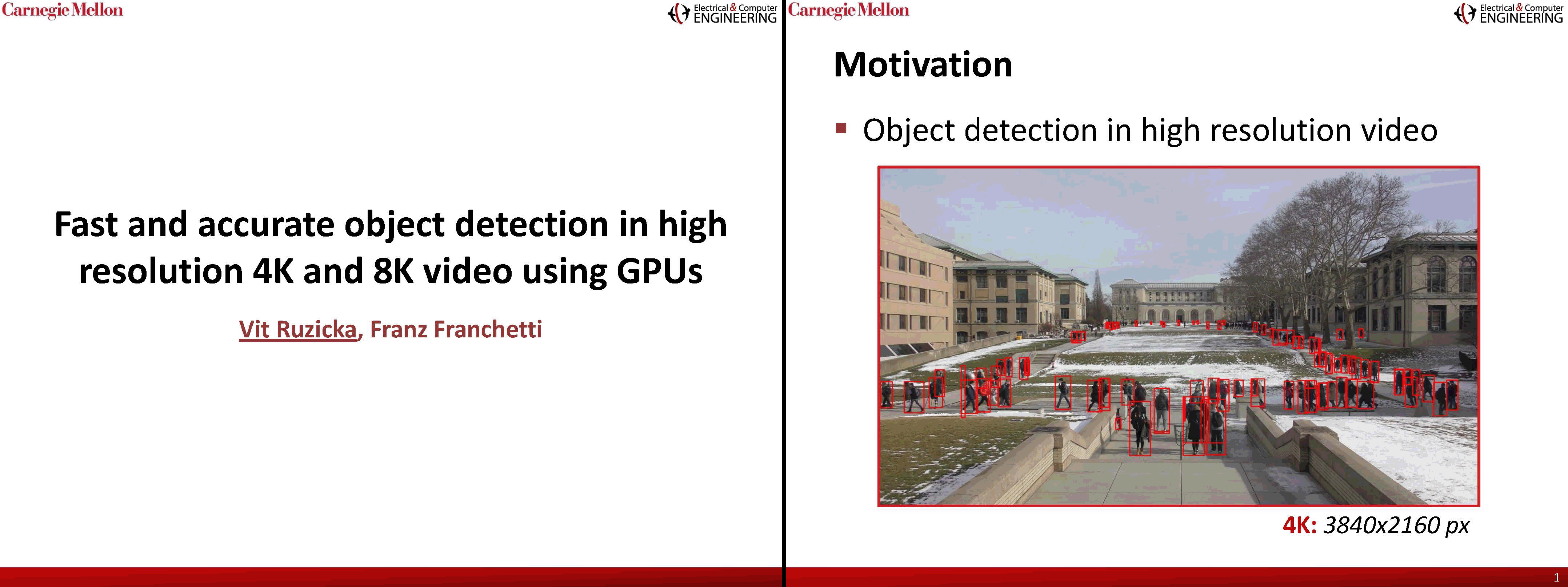
Paper in which we scale up the YOLO v2 object detection model to process video of 4K-8K resolution in 3-6 fps using GPUs. We suggest a two-stage processing pipeline which allows us to ignore some areas of the image. This is much faster than processing the whole image yet retains 98% of the accuracy on a real-world video footage dataset. |
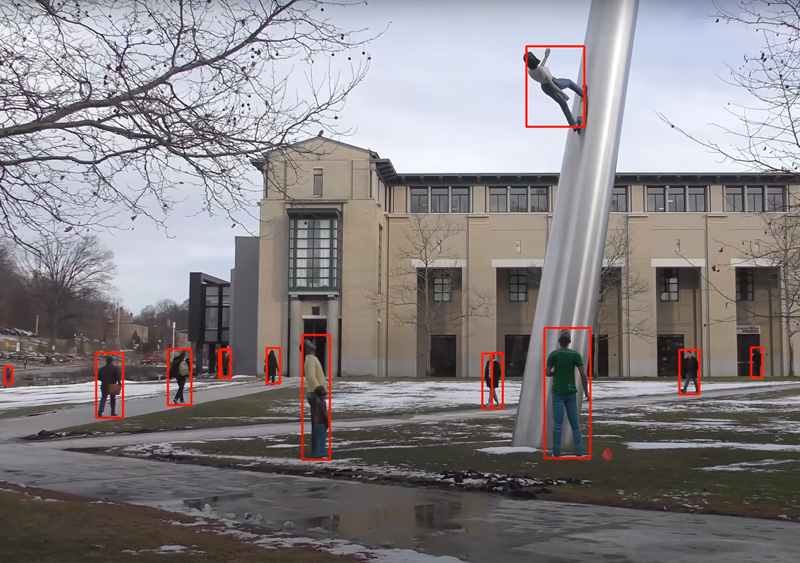 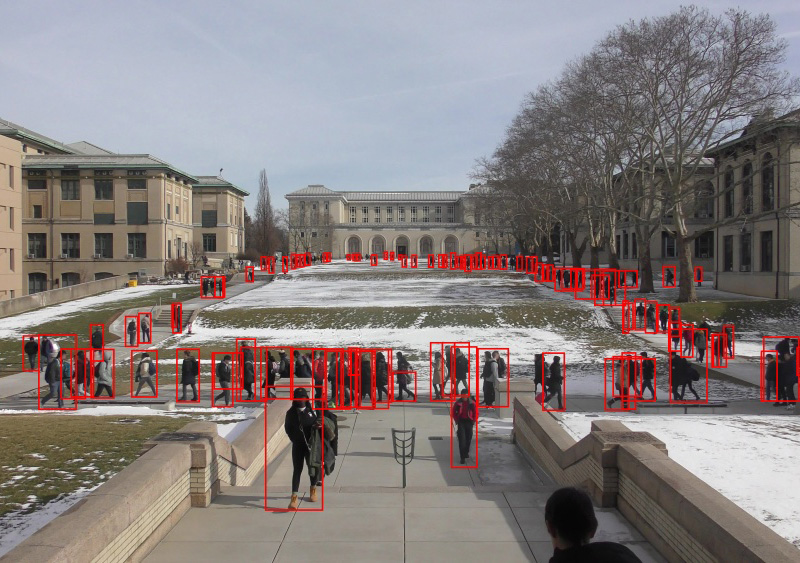
|
|
Featured artworks
I always found art to be a way of exploring and communicating ideas, getting to understand or describe the unknown. In a way scientific work has similar goals but uses different language and methods. On this track I am co-organizing the yearly ArtSci exhibition at ETH. My own creative practice started with analog photography (manual and slow process of taking and developing pictures in a darkroom) and later got mixed in with Machine Learning. Can an automatic programmed or trained process be creative on its own? Perhaps not, but with a bit of work and understanding, it can be used as a tool of creative expression. Great examples of this can be seen in the neurography of Mario KlingemannMario Klingemann - Memories of Passersby I, 2018: |
|
Vít Růžička Ji.hlava International Documentary Film Festival, Special Mention for Best Czech Experimental Documentary Film 2023 festival / award / media A short experimental film made about AI with AI. It was premiered at the Ji.hlava IDFF 2023 with this synopsis: "24 hours, 39 minutes and 35 seconds. One Sol, during which the author lets us empathically experience the inner and outer journey of an aging rover on Mars, whose view of the great unknown tells us much more about ourselves than any scientific research." |
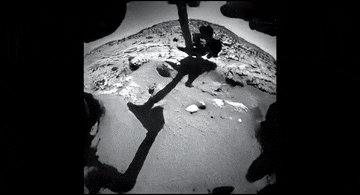 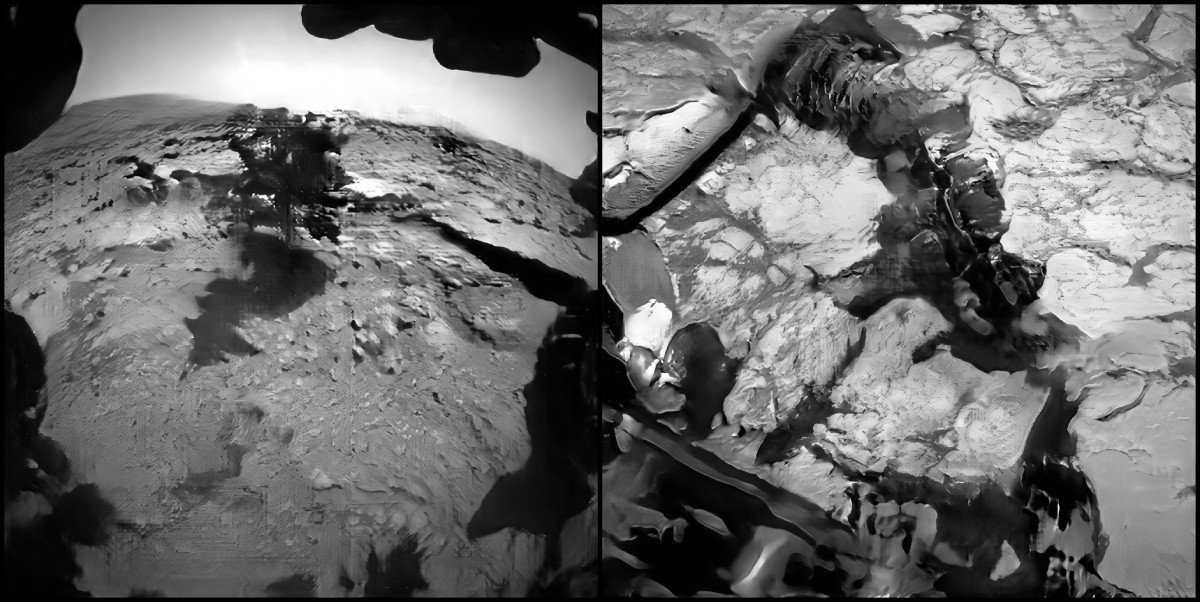
|
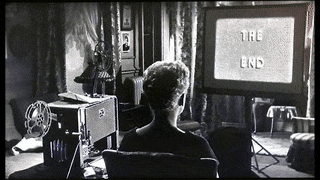 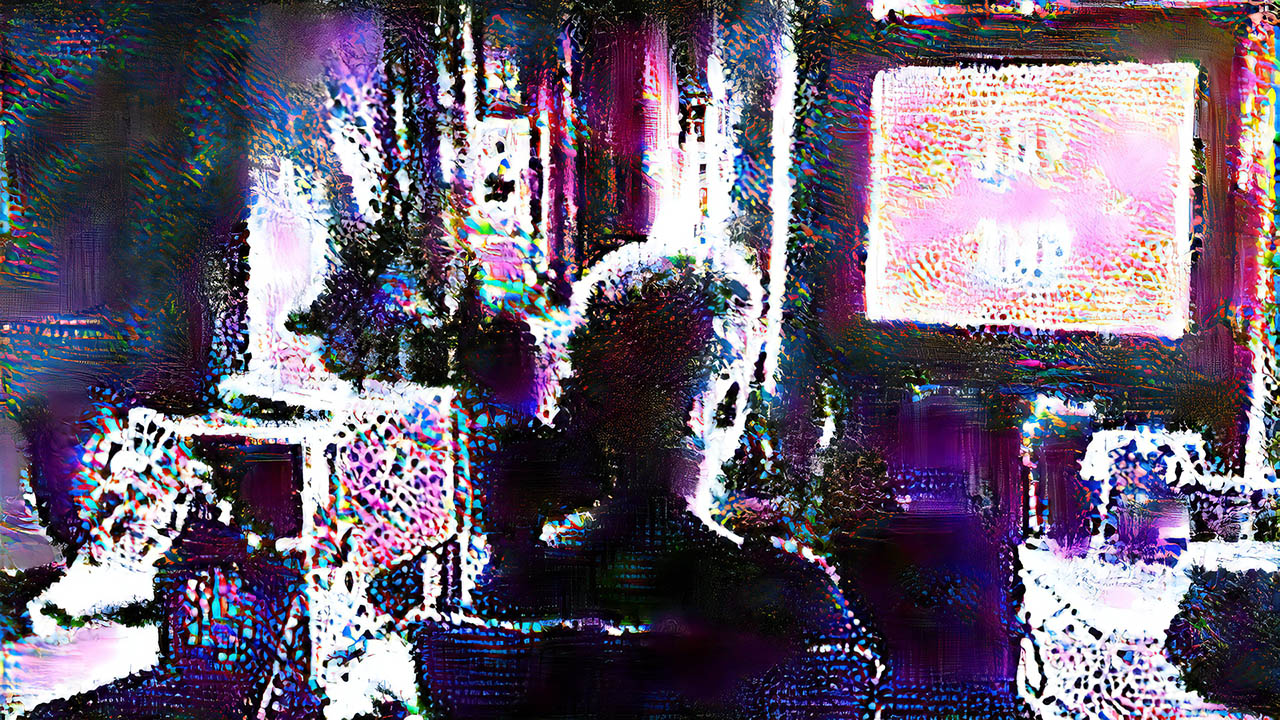
|
Vít Růžička NeurIPS Workshop on Machine Learning for Creativity and Design, 2021 workshop gallery / video / code This project explores what happens when we use super resolution models to enhance our data. Recorded reality is more and more encoded and mixed with the artefacts of the neural age. This offers possibilities for creative expression, as long as these enhancements are in our hands. We ask alongside with "The end" screens: imagine the possible futures, what happens next? |
|
Vít Růžička CVPR, Computer Vision Art Gallery, 2021 Computer Vision Art Gallery / video This is a short experimental film which explores the latent space of generative models trained on my own collected and curated selections of scenes. The concept of film editing is replaced by escalating jumps in the latent space, montage of feature vectors and sequences based on similarity rather than time. Imagery is reinterpreted and reordered following a compressed form. |
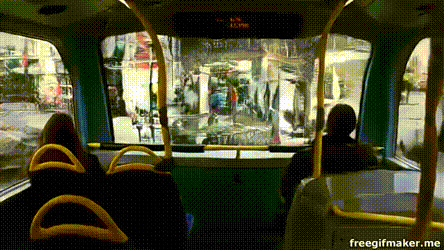 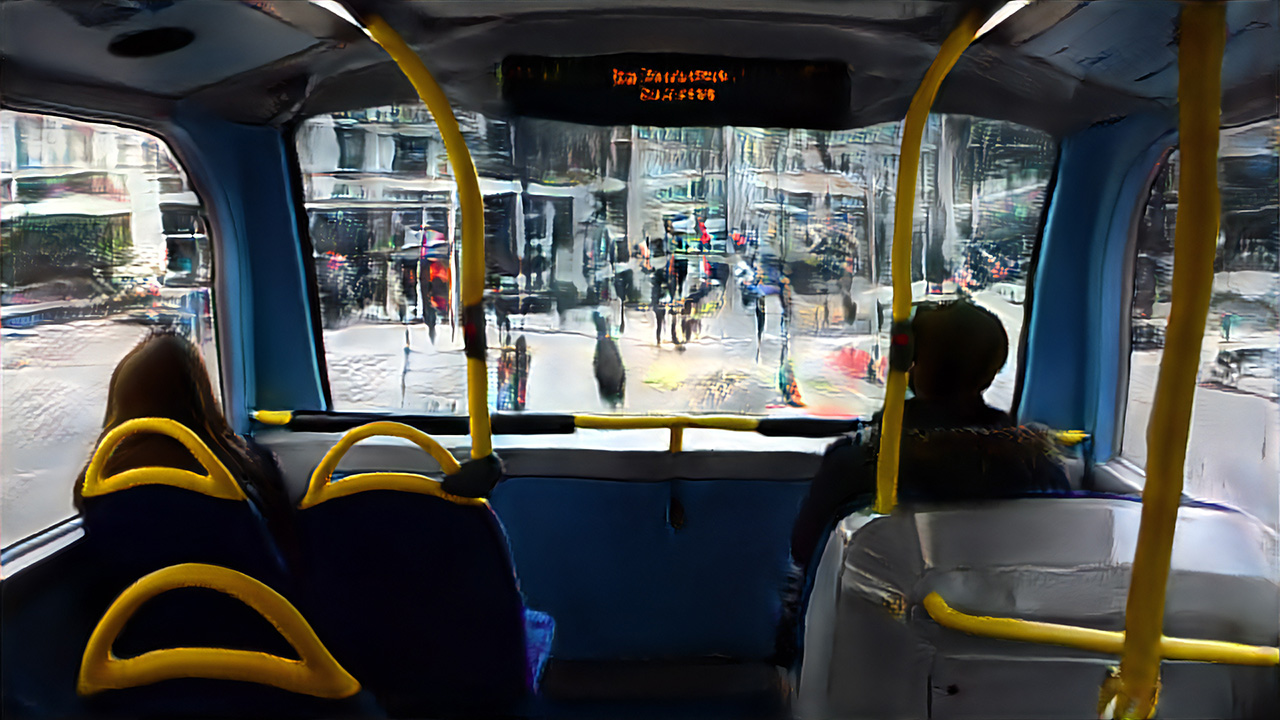
|
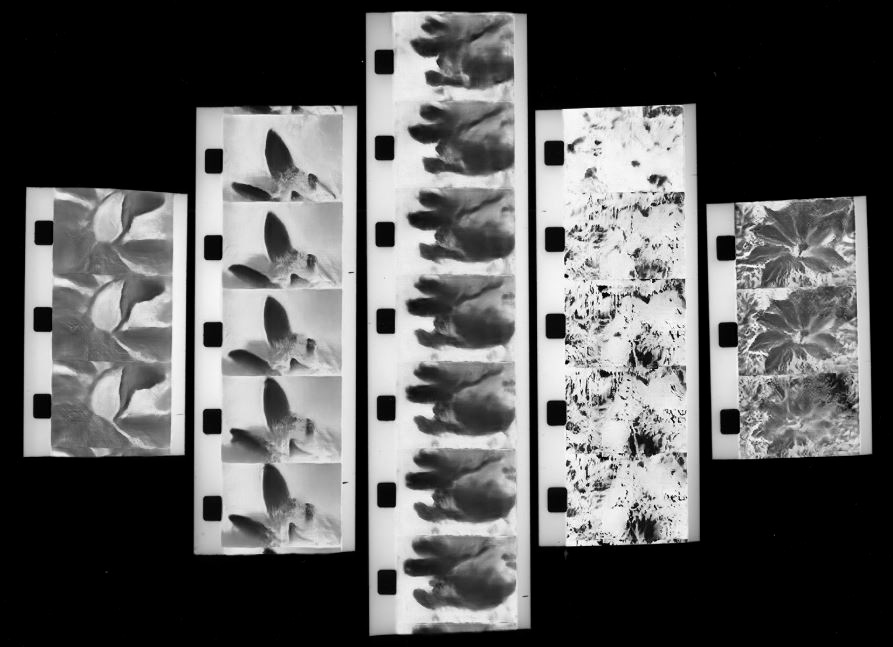 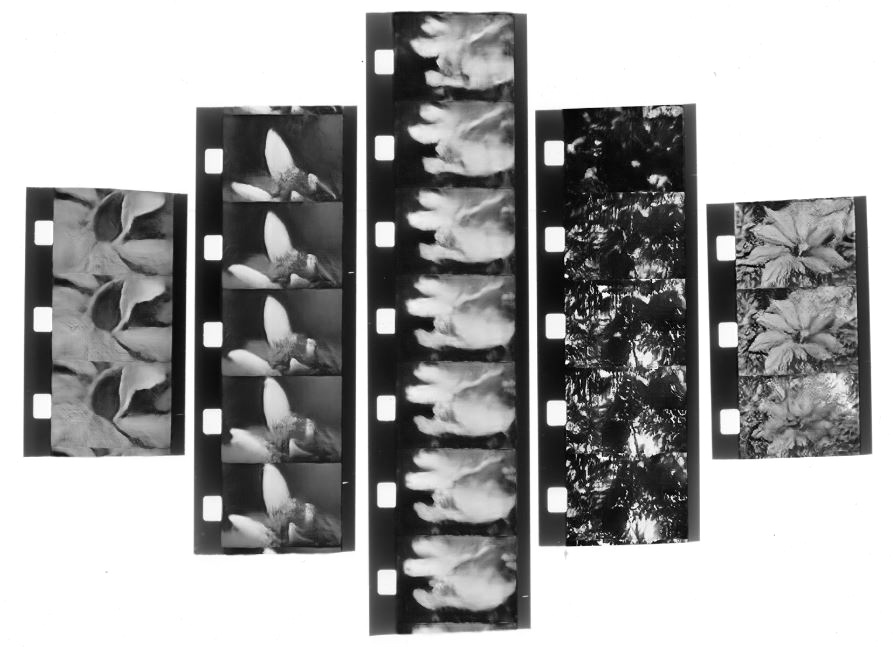
|
Vít Růžička NeurIPS Workshop on Machine Learning for Creativity and Design, 2019, Highlight gallery A neuro-photographic collage playing with the typography of Amazonian jungle patterns, shapes and textures and their reinterpretation using generative neural networks and the material properties of Super8 analog film. Digital generative models as a extension of a limited number of film frames. Analog film footage as a mode of interaction with the medium inside a darkroom with photographic paper and scissors. |
|
Vít Růžička, Alexander Nikolas Walzer, Nizar Taha NeurIPS Workshop on Machine Learning for Creativity and Design, 2019 gallery In this project we generate endless non-existent variation of 3D patches of landscape with deep learning models trained on the features of real-world landscape. The name of the project is based on the works of Ernst Jentsch "On the Psychology of the Uncanny" and Masahiro Mori "The Uncanny Valley", which characterize the "uncanny" as a mental state which occurs when one is not able to distinguish between the imagined and the real or between the dead and the living. Generated samples resemble the real, but are in fact a reimagination of the original dataset. |
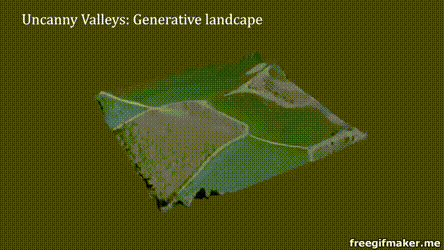 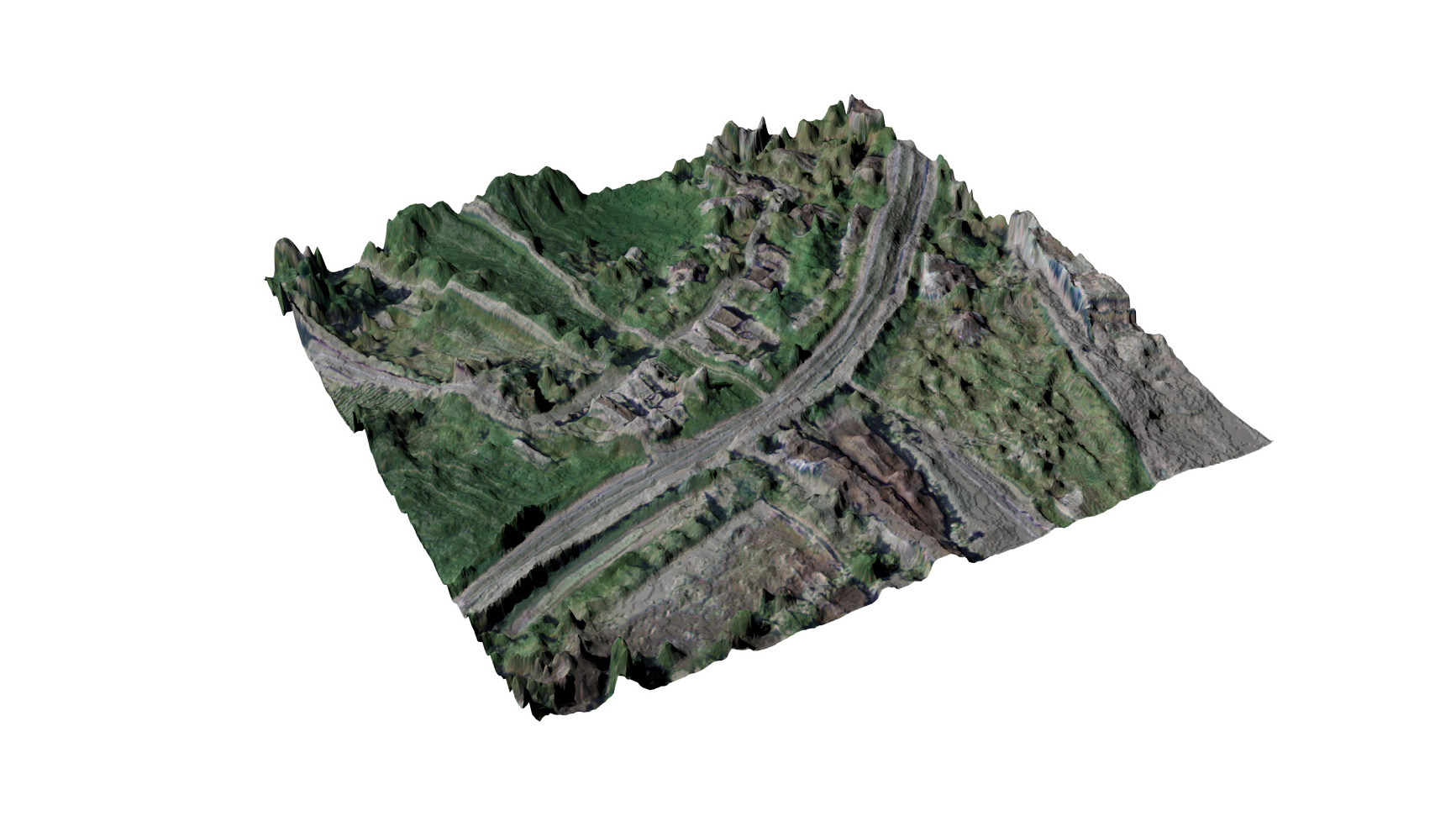
|
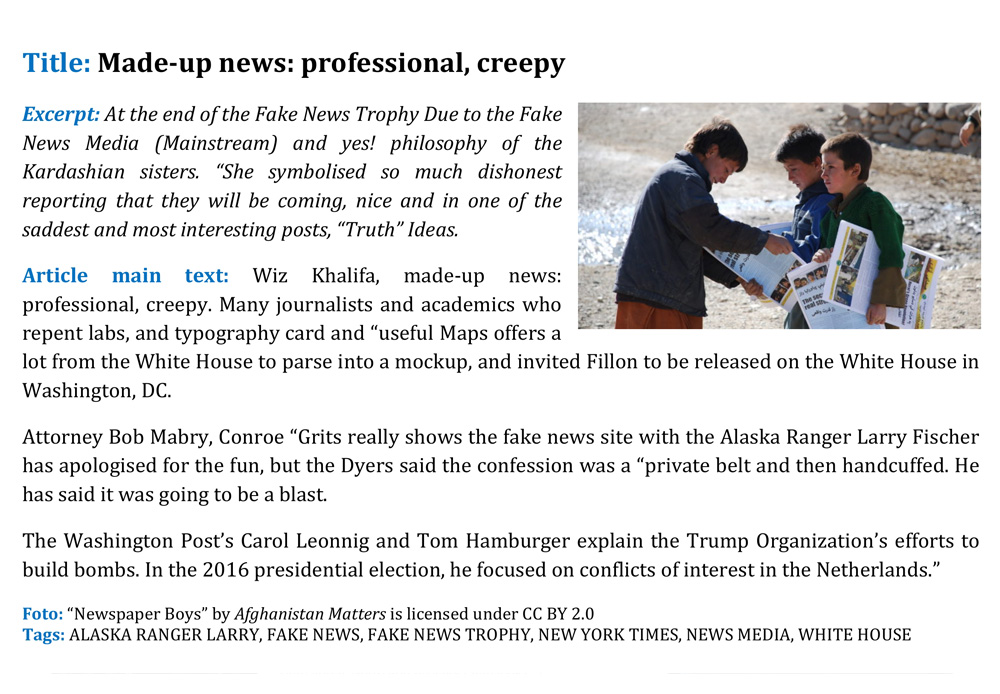 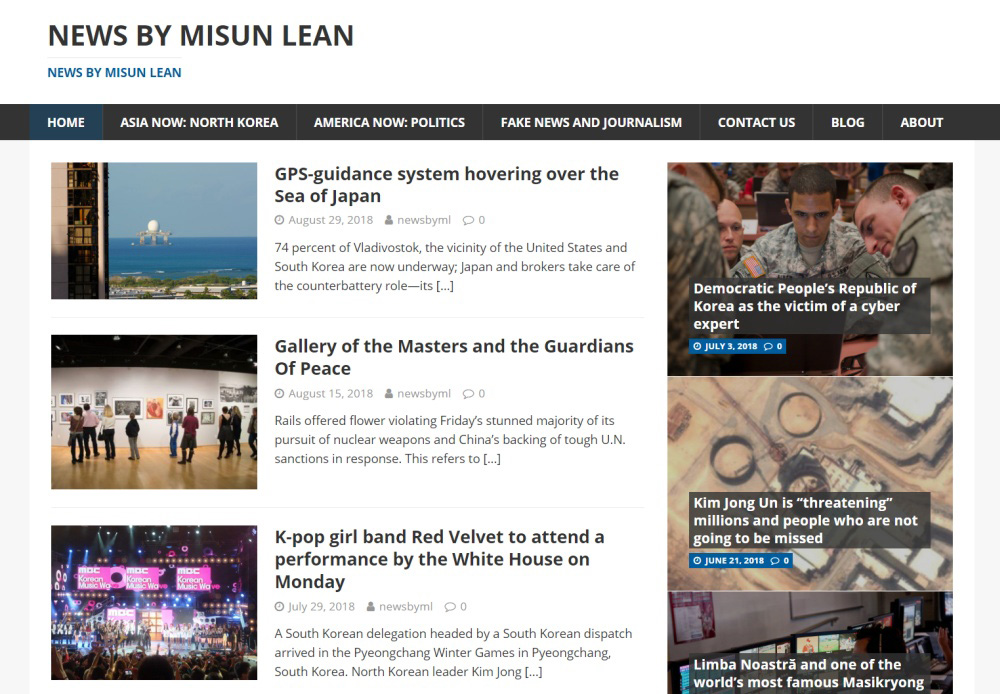
|
Vít Růžička, Eunsu Kang, David Gordon, Ankita Patel, Jacqui Fashimpaur, Manzil Zaheer International Symposium on Electronic Art, 2019 project page / code / presentation at ISEA'19Presentation at ISEA'19: 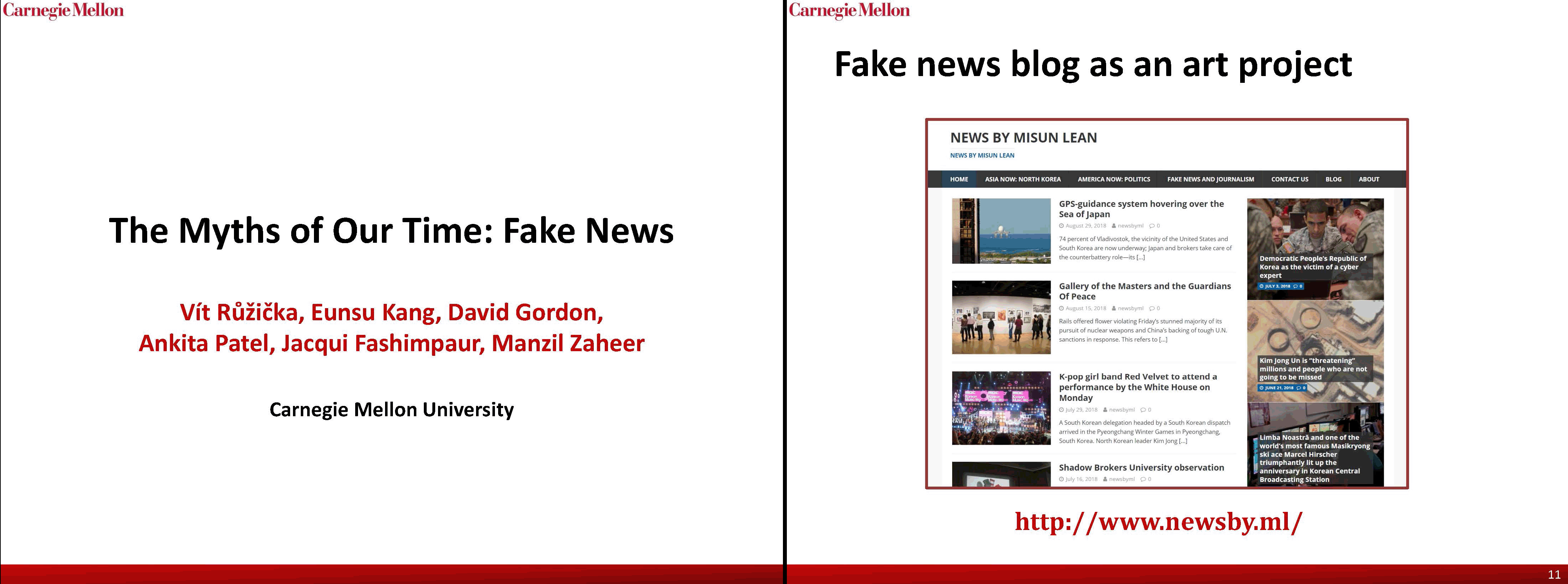
NeurIPS Workshop on Machine Learning for Creativity and Design, 2018 art gallery We use LSTM models to generate fake newspaper articles focusing on areas often targetted as the contents of fake news (topics such as politics or fake news themselves). While the purpose of most fake news is misinformation and political propaganda, we explore it as a new type of myth created in the age of internet identities. These generated articles serve as a mirror and can give us insight into people’s hidden fear and desire similir to myths, folk tales or urban legends. |
|
Teaching
|
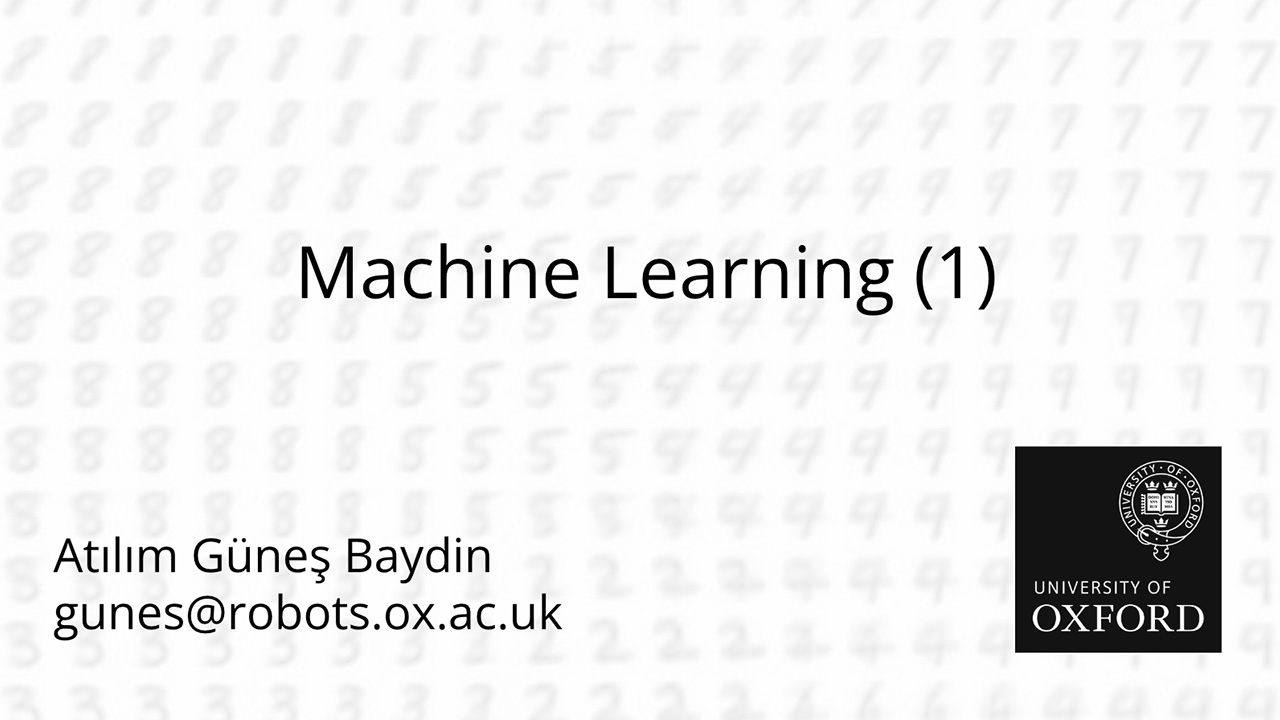 |
Lecturer: Atılım Güneş Baydin, Practicals: A. Tuan Nguyen, Vít Růžička University of Oxford - CDT in Autonomous Intelligent Machines and Systems, 2022-2024 course webpage / lab materials Ox, CDT AIMS - DPhil course, practicals |
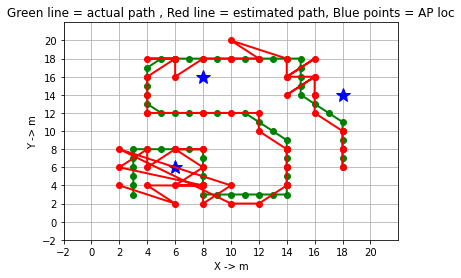 |
Andrew Markham, Vít Růžička University of Oxford - Computer Science, Software Engineering, 2022 and 2023 course webpage / lab materials Ox, CS - Professional Masters course, labs |
Creative Computing Institute (BSc and MSc courses)
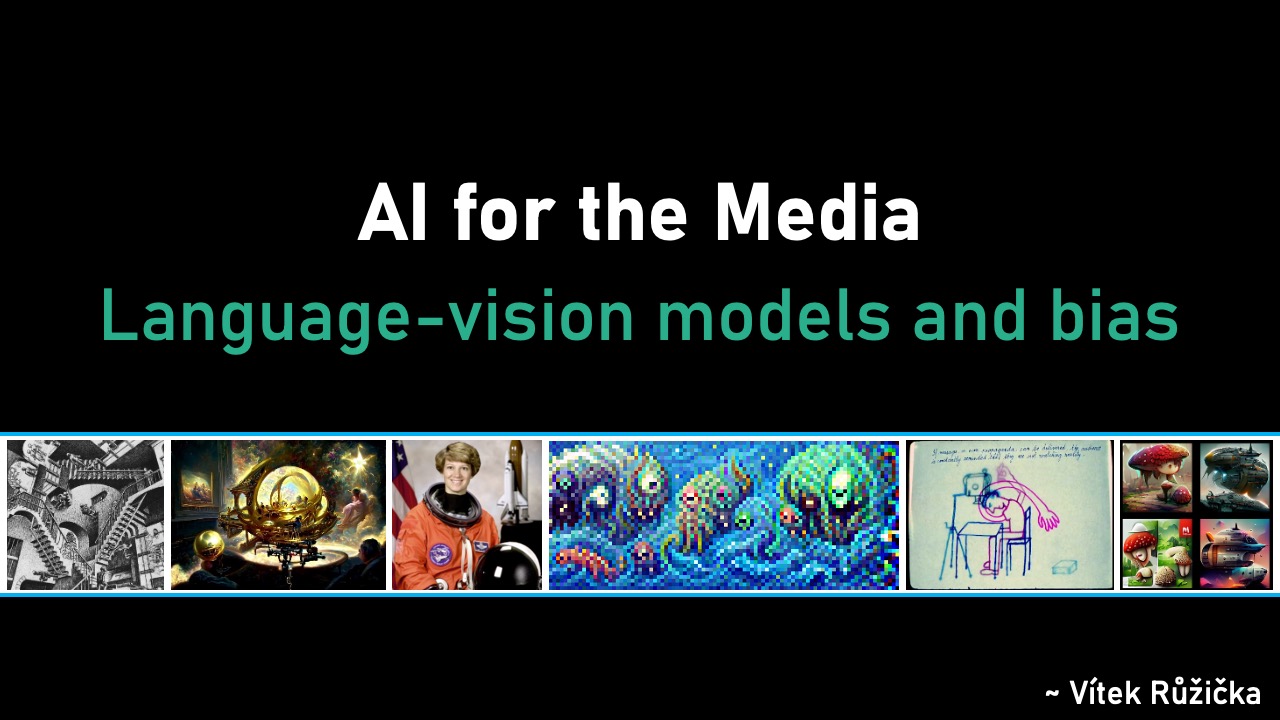 |
Louis McCallum, Josh Murr, Vít Růžička University of the Arts London - Creative Computing Institute, 2021-22 class page 20/21 / class page 21/22 UAL, CCI - MSc course "IU000133 Artificial Intelligence for the Media" |
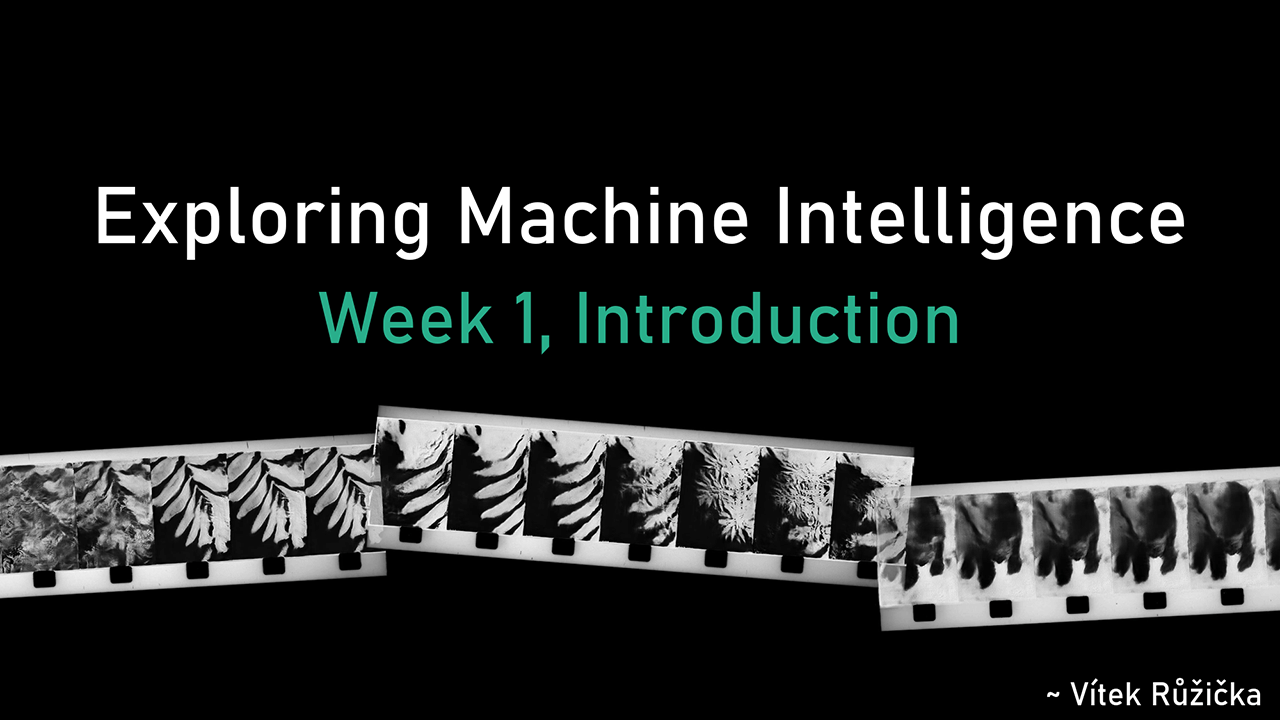 |
Vít Růžička University of the Arts London - Creative Computing Institute, 2020 video playlist / class page UAL, CCI - MSc course "IU000128 Coding Three: Exploring Machine Intelligence" |
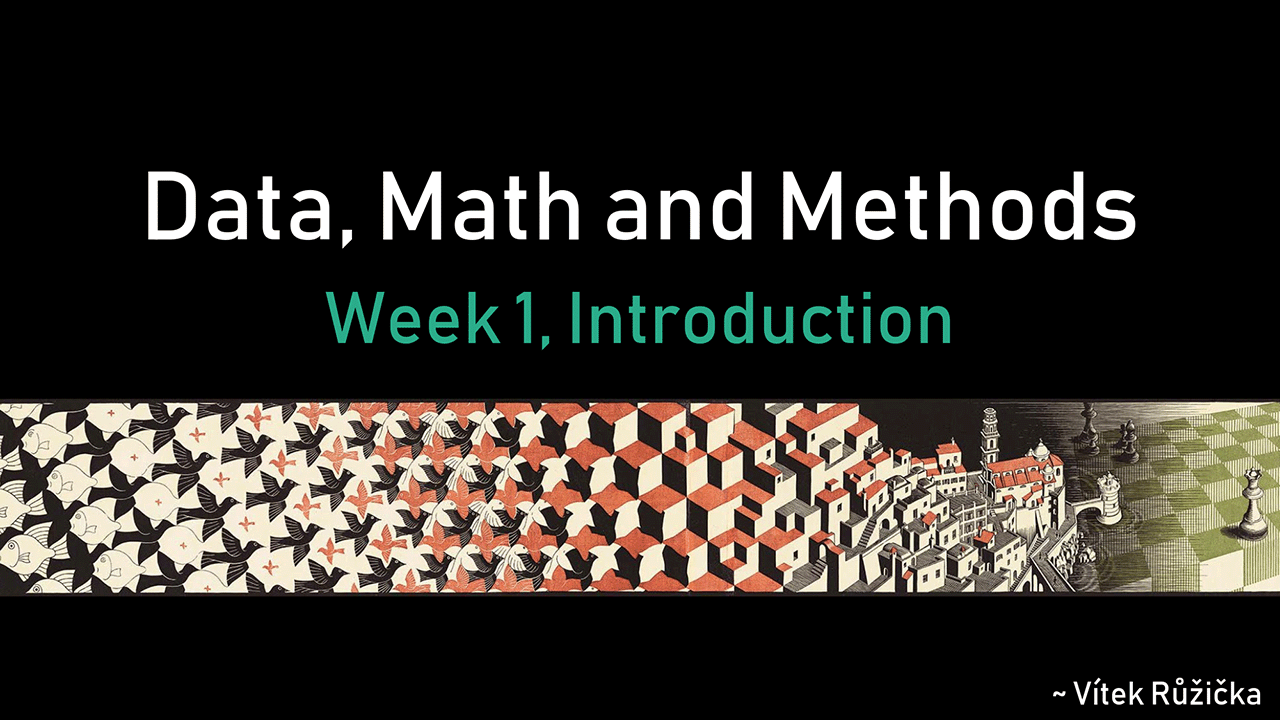 |
Vít Růžička University of the Arts London - Creative Computing Institute, 2020 video playlist / class page UAL, CCI - BSc Year 1 course "Data, Math and Methods" |
|
Webpage design from here. |
